When you Google “Pixel 6 review”, you are going to see tons of positive reviews of the phone. And after watching almost all of them, I requested one of my friends who lives in the US to order one for me and then send it here in Nepal via DHL.
So, she ordered it from Best Buy. But maybe because of the global chipset crisis or Google’s lack of experience in the hardware distribution business since it’s primarily a software company—my friend only got the Pixel 6 after 3 weeks of placing the order.
Google Pixel 6 Specifications:
- Body: 74.8 x 158.6 x 8.9mm, 207 gm, Glass-metal hybrid build, IP68 rated, Gorilla Glass 6 back
- Display: 6.4-inches “Smooth Display” OLED panel, 90Hz refresh rate, 1 million:1 contrast ratio, 16 million colors, Gorilla Glass Victus
- Resolution: FHD+ (2400 x 1080 pixels), 20:9 aspect ratio, 411 PPI
- Chipset: Google Tensor (5nm Mobile Platform), Titan M2 security coprocessor
- Memory: 8GB LPDDR5 RAM, 128/256GB UFS 3.1 storage (fixed)
- Software & UI: Android 12
- Rear Camera: Dual (with LDAF sensor, LED flash);
– 50MP, f/1.85 primary sensor, OIS
– 12MP, f/2.2 ultra-wide camera, 114º FOV - Front Camera: 8MP f/2.0 sensor (punch-hole cutout)
- Audio: Stereo speaker setup, No 3.5mm headphone jack
- Security: In-display fingerprint sensor (optical), No face unlock
- Sensors: Accelerometer, Ambient Light, Barometer, Gyro, Magnetometer, Proximity
- Connectivity: Dual-SIM (Nano), WiFi 6E (802.11 a/b/g/n/ac/ax) with 2.4/5/6GHz, Bluetooth 5.2, GPS / AGPS / Glonass / Galileo / QZSS, USB Type-C, 4G LTE, 5G
- Battery: 4614mAh with 21W fast charging (no adapter provided)
- Color Options: Stormy Black, Sorta Seaform, Kinda Coral
- Price in Nepal: N/A (not launched yet)
- USD 599 (8/128GB) | USD 699 (8/256GB)
Google Pixel 6 Review:
And if you go to Reddit or Twitter, you will see lots and lots of buyers complain about not receiving their unit of the Pixel 6 or 6 Pro yet.
As you can tell, it’s definitely not an easy phone to get your hands on. On top of this, Google has launched this phone in a handful of regions only. Keeping all this in mind, I really don’t understand how Google wants to position itself in the smartphone industry. If I remember correctly, even last year’s Pixel 5 was restricted to a handful of countries.
And they are yet to bring the Pixel 6 series to one of the biggest smartphone markets like India. Also, how they are going to distribute their products globally in the coming future is a big question mark—the aspect where Apple, Samsung, and other Chinese brands are extremely good at.
Therefore, I genuinely feel Google could—or rather, should—do better with its distribution network.
I mean, they’ve got all the resources to become a big player in the smartphone industry. And this phone, the Pixel 6, has convinced me of the same even more. It costs around USD 650 in the US after taxes, which converts to roughly NPR 78,000 in Nepal or INR 50,000 in India. So, with proper distribution channels and launch offers, if Pixel phones are launched at an aggressive price, I can see it being a massive hit globally.
Design & Build
- 74.8 x 158.6 x 8.9mm, 207 grams
- Glass front/back, aluminum frame
- IP68 certified against dust/water damage
Anyway, shortly after finishing my review of the iPhone 13 and the Realme GT Neo 2, I started using the Google Pixel 6 as my main phone. And overall, it just feels like an entirely different phone. That’s not to say it’s a perfect phone—at least not perfect enough for me. But the crucial thing here is that Pixel 6 is the most balanced semi-flagship phone you can get right now.
I think that matters a lot for many out there who can’t afford a flagship phone but want a reliable device with a near-premium experience. And this is where Pixel 6 wins big time! First off, let me talk about its design. Is it great? Not quite.
It has a pretty generic glossy glass back design with metal frames that you come to expect from a phone in this price range in 2021. Thankfully, it does have IP68 dust and water resistance, which is usually present on a phone of this price segment as well.
But on my usage, I found it to be slightly heavy, despite its form factor and a relatively smaller 4600mAh battery. Regardless, its even weight distribution complemented by slight curves on the back means holding Pixel 6 isn’t all bad and you will eventually get used to its weight.
A little short of a perfect design
Still, it would have been better if Google had gone with a matte back—like the frames—alongside more tactile buttons with superior feedback. This one feels a bit shallow to my taste. And the position of these buttons catches me off guard way too often since I constantly mistake the volume rockers for the power button instead. Even its haptic feedback doesn’t compare against the likes of Samsung’s flagship devices.
![]()
At the back, this wide camera module that spans across the phone is certainly unique. But I have seen some of them dislike it. It’s totally a personal preference, I know. And I am perfectly fine with it since it’s certainly a breath of fresh air compared to most Chinese phones of 2021.
Display
- 6.4-inches FHD+ OLED panel
- “Smooth Display” 90Hz refresh rate
- Gorilla Glass Victus, 16m colors
On the front, however, Google should have provided slimmer bezels all around, since this one gives more of a “mid-range” vibe instead.
I could’ve given it a pass if it had subtle curves on the side, but here we are. And if the leaked renders of the Pixel 6a are anything to go by, it looks like Google has acknowledged this issue on the comparatively inexpensive Pixel phone that’s launching soon.
For the USD 650 price tag, I find this display quality to be just about average. Don’t get me wrong, it’s a fine screen with sufficient brightness and good colors. But if you look at the competition, much cheaper Android phones offer better displays these days.
And given how affordable OLED screens have become over the years, I think Google should have definitely offered a smoother 120Hz refresh rate and a faster 360Hz touch response rate here. While I understand 90Hz is completely fine for most users, if you’re coming from a 120Hz display, Pixel 6 will feel a bit outdated—and hopelessly average.
And with Pixel phones, quality control issues are common news. I think the person in charge of Pixel’s quality assurance department is Creed Bratton.
![]()
Every time a new Pixel phone hits the market, so do a ton of issues. And this time, some Pixel 6 users have complained about the strange screen flickers, greenish tint, a second punch hole, and whatnot. Luckily, my unit hasn’t faced any of those troubles till now.
Super slow fingerprint reader
Moving on, this OLED display also embeds a fingerprint sensor underneath. It’s an optical sensor, which means it isn’t always-on like an ultrasonic sensor that I’ve come to love about Samsung’s flagship phones. But the bigger issue here is that it’s not as fast as the one on the OnePlus 9 or other Chinese smartphones.
Google says the delay is because of how this sensor “utilizes enhanced security algorithms”.
But with mass public outcry, Google addressed the finicky fingerprint reading issue in the latest security update. It does feel a bit faster than before—although not by much. Now, getting to the speaker quality, it’s a solid B+. Pixel 6 doesn’t sound better than the iPhone 13 Pro Max or the Galaxy S21 Ultra. But, it is still good enough for casually listening to music and videos.
Performance
- Octa-core Google Tensor 5G SoC (5nm)
- 8GB LPDDR5 RAM, 128/256GB UFS 3.1 storage (fixed)
- Android 12 (stock)
Likewise, performance is one area where the Pixel 6 doesn’t disappoint. Powered by the proprietary Tensor SoC, thanks to the partnership between Google and Samsung, this first-gen mobile chip looks quite promising.
| Google Pixel 6 | ||
| Androbench | Sequential Read | 1357.54 MB/s |
| Sequential Write | 250.47 MB/s | |
| AnTuTu v8.5 | Total | 574331 |
| CPU | 170570 | |
| GPU | 234408 | |
| Memory | 77359 | |
| UX | 91994 | |
| Geekbench 5 | CPU (Single Core) | 1041 |
| CPU (Multi-Core) | 2886 | |
| Compute (Vulkan) | 8130 | |
| PCMark (Work 3.0 Performance) | 10852 | |
| 3DMark (Wild Life) | 6934 | |
- Higher is better
In terms of synthetic benchmarks, it is on par with the likes of last-gen Snapdragon and Exynos chipsets. By last-gen, I mean the Snapdragon 888 and Exynos 2100, of course. And on my real-world usage as well, everything is as smooth and fast as you would expect. During the initial boot, the phone did get slightly warm, but the problem was resolved after I received an OTA update.
Memory management leaves no room for complaint either, and there have been no micro stutters or stability issues under my normal day-to-day tasks either.
Gaming, on the other hand, certainly could have been better. This is supposed to be a flagship chipset that should technically be competing against the big boys. Yet, I noticed the Tensor chip struggling with demanding games like Genshin Impact at the highest of settings.
Not the most capable GPU
With graphics set to highest and turning on the 60fps mode, the gameplay isn’t that good and I noticed frequent stutters and lags. Even dialing down the settings to High doesn’t improve the stability as much since I frequently noticed some slight jitters every now and then. As a result, I had to bring fps down to 30 for relatively better performance.
![]()
As for PUBG Mobile, the Pixel 6 isn’t able to hit Ultra HD graphics and Extreme frame rates either, which is something the iPhone 13 and other Snapdragon 888-powered phones pull off rather easily. Regardless, under HDR graphics and Ultra frame rates, I was able to achieve a stable 40fps where the gameplay was quite smooth.
For 60fps gaming, you can set it to Smooth graphics and Extreme frame rates that will yield 100% stability. Likewise, 90fps-optimized games like Mech Arena and Critical Ops can hit the 90fps mark here.
On top of this, I didn’t face any heating issue on this phone either, which is great. It does get a little warm—yes—but not to the extent of Snapdragon 888-powered phones. But at the end of the day, for gaming, the Pixel 6 is simply not on par with the competition. And I really hope Google catches up with the competition in the next iteration of the Tensor chip.
One for the stock Android enthusiasts
Yet, Pixel phones go beyond benchmark results or high-end gaming. The pure Android 12 experience has been an absolute joy to use. At this point, it’s fair to assume that you are well-familiar with most Android 12 features including the theming system, new widgets, redesigned quick settings, camera/mic usage indicators, and such. So I won’t be wasting your time by discussing them here.
But what I will talk about are some incredibly cool Pixel 6-exclusive features like better dictation, Live Translate, and Calling Assist. Unfortunately, some of them don’t work as intended or are straight-up unavailable here in Nepal.
For instance, the Pixel 6 can fend off robocalls, handle call hold times, or send car crash alerts to your emergency contacts—if you’re in the US and a few other regions.
![]()
Nevertheless, out of all the features that I can access, I find improved voice typing to be the most useful. Google has baked the language model into the Tensor chip, so dictation is more accurate and much faster here. And because the said model is on-device, it works without an internet connection.
For the most part, it works almost flawlessly. You can say “next paragraph” to change paragraph, clear text, undo edits, add emojis… all with your voice. Apart from this, I couldn’t get Live Translate to work but Live Caption with translation is up and running here. Besides initial setup, Google says this feature works without.
However, even after downloading the required language models, it didn’t work without an internet connection in my case. So I played a few YouTube videos to see just how effective it is. Sadly, unlike voice typing, Live Translate isn’t quite as fast.
And cross-checking the live translation with the video’s closed-caption, I noticed that Google’s captioning is off by a certain degree. Plus, live captioning doesn’t work on Netflix which could be due to its catalog of copyrighted contents.
Cameras
- Dual camera setup at the back
- (50MP main, 12MP ultrawide)
- 8MP selfie camera (punch-hole)
Okay, let’s move to the cameras now. The Pixel 6 hosts a 50MP f/1.85 primary camera with OIS and a 12MP f/2.2 ultrawide shooter. Upfront, there’s an 8MP selfie camera inside the punch-hole cutout.
So for this review, I compared the cameras of the Google Pixel 6 against the iPhone 13 Pro Max. I know it’s not exactly a fair contest given how the iPhone costs almost twice as much as the Pixel 6, but I had to find out just how much the “Pixel” reputation holds up.
Normal Images
And the fact that I’m pitting these two camera systems against each other should already tell you that Pixel 6 is easily the best camera phone for the price.
Anyway, I found that Google’s imaging algorithm tends to boost exposure by a bit to deliver overall brighter images in most cases. As a result, its photos don’t look as punchy as those from the iPhone.
Then again, it all boils down to personal preference. Detail and sharpness levels look similar on both phones though. It’s the same with wideangle images as well.
Portrait Images
Moving on, portraits from the Pixel 6 have a narrower field of view—but retain a more natural skin tone. At times, subjects even tend to look smoothened from the iPhone. Here, the Pixel 6 series introduces something called “Real Tone”, which longs to “accurately highlight the nuances of diverse skin tones”.
This is a really big deal for people with darker skin complexions because traditional smartphone cameras have always misrepresented the skin tones of people of color. We can see this in action from the selfie camera as well.
Take this photo for example. iPhone’s color processing has turned the subject’s skin tone pinkish, whereas the Pixel 6 delivers a much more natural shot. Aside from skin tone itself, other elements of the image look truer-to-life like the black jacket and such.
Further enhancing the camera experience
Then there are all the helpful features to enhance the camera experience even more. Want to quickly remove some elements from the photo? Magic Eraser’s got your back. Sure, it’s not perfect but 60% of the time, it works every time.
Face unblur is pretty self-explanatory, which works best when the subject isn’t moving very aggressively. Action Pan is yet another fun camera feature that adds drama when capturing fast-moving objects. But most of the time, I found that the camera fails to detect the subject properly. Maybe it’ll get better with future updates. Let’s see.
Videography
When it comes to smartphone videography, we know iPhones are the gold standard. But I must say the Pixel 6 holds its ground pretty firmly. At practically every resolution, I find its videos to be brighter—whereas the iPhone goes a bit overboard with contrast. On the other hand, stabilization is similar between these phones—even at 4K/60fps.
Nighttime Videos
Still, under low-light conditions, the iPhone shoots better videos with better exposure and a hint of warm tint. In terms of ultrawide videos, as you can see, the Pixel 6 has a narrower field of view. But I still prefer it over iPhone’s contrast-heavy result.
However, I’m pretty annoyed with how the Pixel 6 is capped to just 1080p/30fps videos from the front camera. Here as well, the Pixel manages to deliver better exposure and a relatively consistent skin tone compared to iPhone.
Battery
- 4614mAh battery with 21W fast charging
Just like the underwhelming selfie videos, I’m not too thrilled about the battery endurance of this thing. In all fairness, Google promises 24-hour battery life here and I got similar results during my usage. But coming from the iPhone, this just doesn’t compare. Plus, I noticed that the Pixel 6 can’t provide a decent standby endurance as well.
Maybe it’s the power-hungry CPU architecture at play. Yet, since Google’s machine learning (ML) models run more effectively on the device itself thanks to the “Context Hub”, the battery life should get better in the long run. Pair this with the Adaptive Battery tech that’ll learn usage patterns to efficiently prioritize power delivery to apps, the Pixel 6 should—in theory—provide better battery endurance over time.
![]()
Still and all, there’s no hope for faster charging speeds here since the Pixel 6 can accept a maximum of 23W of power only—even when using Google’s recommended 30W power adapter that you gotta buy separately. With this, it takes more than 2 hours to juice up the battery.
Google Pixel 6 Review: Conclusion
At this point in the review, you might have already guessed that the Google Pixel 6 is easily on the “Best phone of the year” shortlist. So, it’s definitely a product I would recommend to anyone looking for a sub-flagship phone.
But looking at the bigger picture, Google occupies less than 1% smartphone market share globally.
And as much I wish you’d buy a Pixel phone for yourself, its limited availability is a harsh reality. Unlike phones from other mainstream brands like Samsung, Xiaomi, and OnePlus, you can’t simply buy a Pixel 6, unless you’re in the US or a handful of European countries.
![]()
Yes, Google has shown they can make terrific phones with equally good hardware and software this time—especially with the Pixel 6. And the upcoming Pixel 6a is shaping up to be an excellent mid-range phone as well. But where Google wants to see itself in the smartphone business, only time will tell.
Personally, I would like to see Google bring a $200 phone to India and other developing nations. And I desperately hope to see Pixel 6a competing against the likes of the OnePlus Nord series and Poco’s midrange phones. That would be a really healthy competition!
- Watch our review video of the Google Pixel 6.
Google Pixel 6 Review: Pros & Cons
Pros:
- Unmatched value for money
- IP68 certified, Gorilla Glass Victus
- Stock Android 12 experience
- Pixel 6-exclusive features are a game-changer
- Terrific camera performance
- Pretty decent battery endurance
Cons:
- Not available in most markets
- Not the most pleasing display
- The fingerprint reader is a bit slow
- Tensor chip has a weak GPU
- Selfie camera limited to 1080p/30fp videos
- Just 23W charging speed






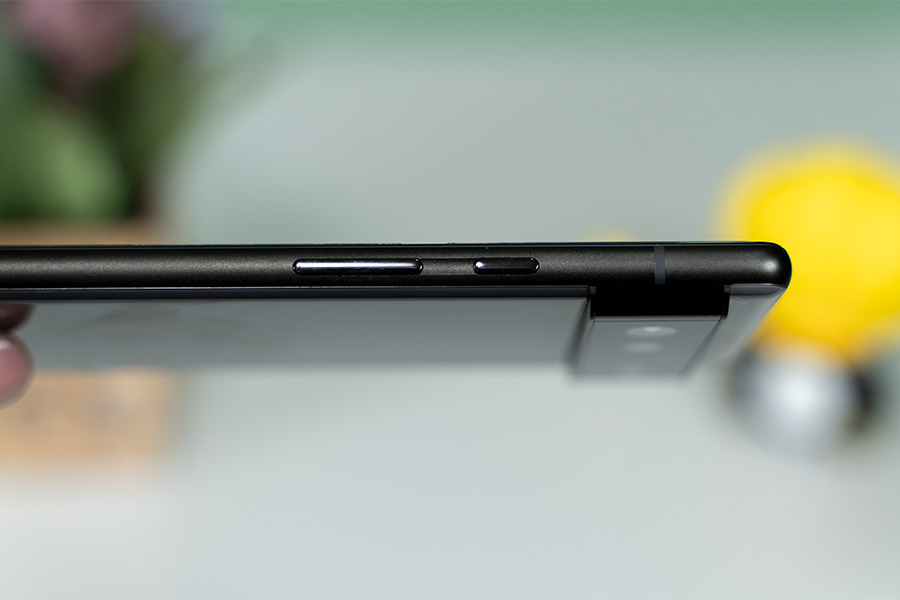


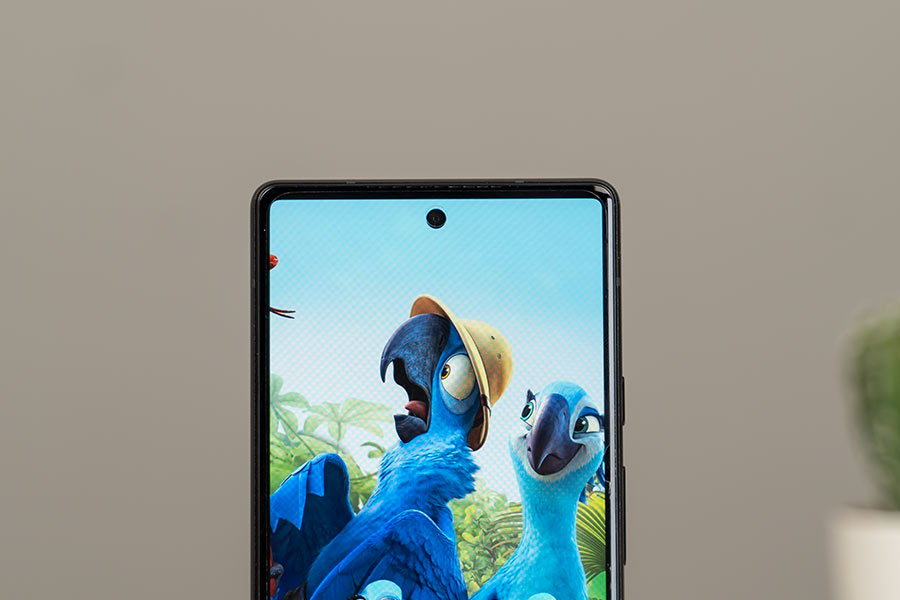



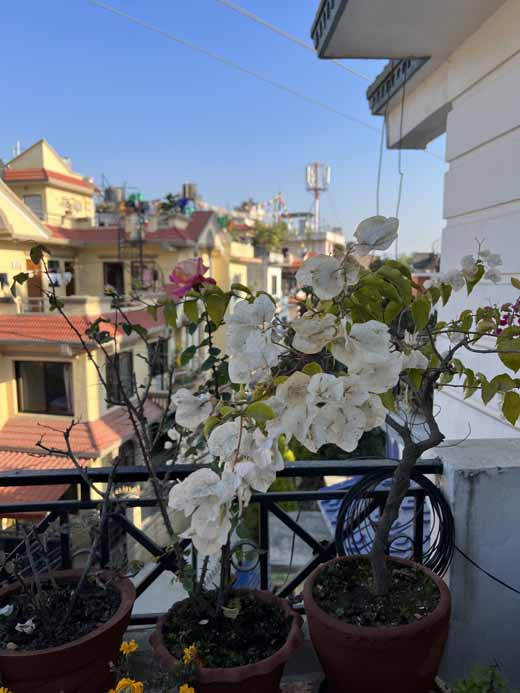
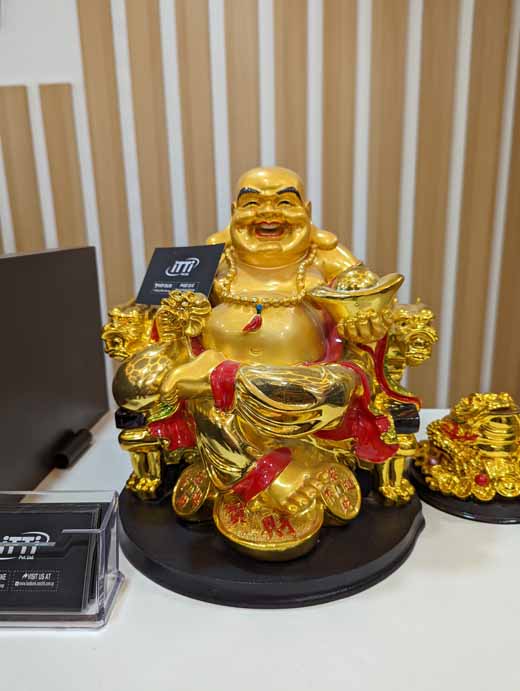










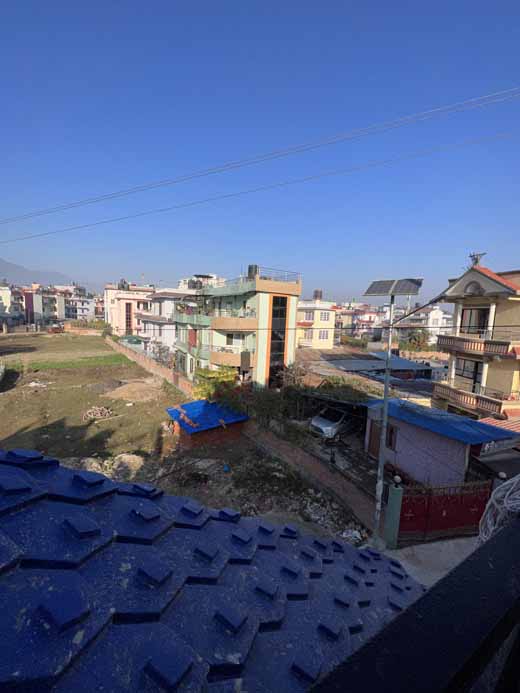









![Best Gaming Laptops in Nepal Under Rs. 250,000 (रु 2.5 Lakhs) [2025] Best Gaming Laptops Under 2.5 lakhs in Nepal [Feb 2025 Update]](https://cdn.gadgetbytenepal.com/wp-content/uploads/2025/02/Best-Gaming-Laptops-Under-2.5-lakhs-in-Nepal-Feb-2025-Update.jpg)
![Best Gaming Laptops in Nepal Under Rs. 120,000 (रु 1.2 Lakhs) [2025] Best Budget Gaming Laptops Under Rs 120000 in Nepal 2025 Update](https://cdn.gadgetbytenepal.com/wp-content/uploads/2025/05/Best-Budget-Gaming-Laptops-Under-Rs-120000-in-Nepal-2024-Update.jpg)
![Best Laptops Under Rs. 80,000 in Nepal [2025] Best Laptops Under 80,000 in Nepal March 2025 Update](https://cdn.gadgetbytenepal.com/wp-content/uploads/2025/03/Best-Laptops-Under-80000-in-Nepal-March-2025-Update.jpg)
![Best Laptops Under Rs. 70,000 in Nepal [2025] Best Laptops Under 70,000 in Nepal March 2025 Update](https://cdn.gadgetbytenepal.com/wp-content/uploads/2025/01/Best-Laptops-Under-70000-in-Nepal-March-2025-Update.jpg)
![Best Gaming Laptops in Nepal Under Rs. 200,000 (रु 2 Lakhs) [2025] Best gaming lapotp under 2 lakhs Nepal Feb 2025](https://cdn.gadgetbytenepal.com/wp-content/uploads/2025/01/Best-Gaming-Laptops-Under-2-Lakh-Nepal-Feb-2025-Update.jpg)
![Best Mobile Phones Under Rs. 15,000 in Nepal [Updated 2025] Best Phones Under 15000 in Nepal 2024 Budget Smartphones Cheap Affordable](https://cdn.gadgetbytenepal.com/wp-content/uploads/2024/03/Best-Phones-Under-15000-in-Nepal-2024.jpg)
![Best Mobile Phones Under Rs. 20,000 in Nepal [Updated] Best Mobile Phones Under NPR 20000 in Nepal 2023 Updated Samsung Xiaomi Redmi POCO Realme Narzo Benco](https://cdn.gadgetbytenepal.com/wp-content/uploads/2024/01/Best-Phones-Under-20000-in-Nepal-2024.jpg)
![Best Mobile Phones Under Rs. 30,000 in Nepal [Updated 2025] Best Phones Under 30000 in Nepal](https://cdn.gadgetbytenepal.com/wp-content/uploads/2025/01/Best-Phones-Under-30000-in-Nepal.jpg)
![Best Mobile Phones Under Rs. 40,000 in Nepal [Updated 2025] Best Phones Under 40000 in Nepal 2024 Smartphones Mobile Midrange](https://cdn.gadgetbytenepal.com/wp-content/uploads/2024/02/Best-Phones-Under-40000-in-Nepal-2024.jpg)
![Best Mobile Phones Under Rs. 50,000 in Nepal [Updated 2025] Best Phones Under 50000 in Nepal](https://cdn.gadgetbytenepal.com/wp-content/uploads/2025/01/Best-Phones-Under-50000-in-Nepal.jpg)
![Best Flagship Smartphones To Buy In Nepal [Updated] Best flagship phone 2025](https://cdn.gadgetbytenepal.com/wp-content/uploads/2024/07/Best-Flagship-Phones-who-is-it-ft-1.jpg)